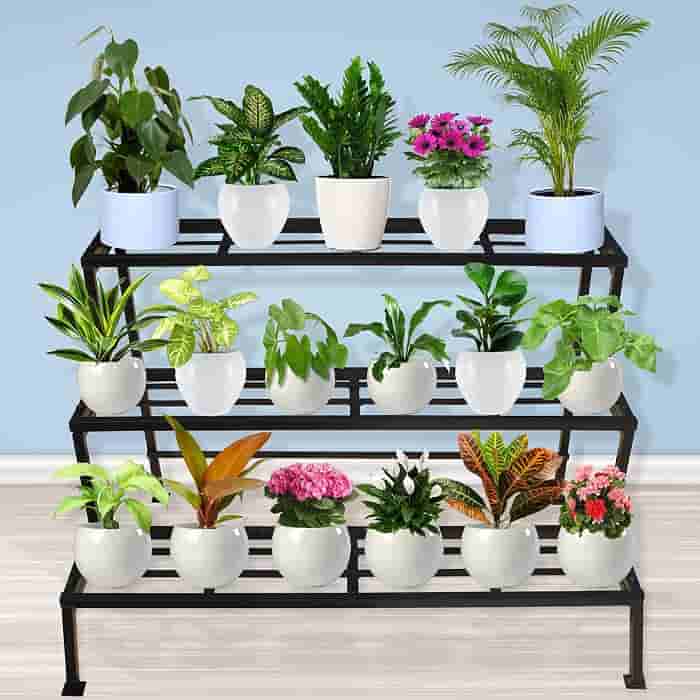Understanding Urban Gardening
Urban gardening has become a popular trend, especially for those living in cities with limited space. With growing awareness of sustainability and a desire for fresh produce, more and more urban dwellers are turning to gardening in their apartments, balconies, and rooftops. This blog will explore various urban gardening ideas that are perfect for small spaces, offering creative solutions for city residents who want to bring a little green into their lives.
What is Urban Gardening?
Urban gardening is the practice of growing plants in an urban environment, such as on rooftops, balconies, window sills, and even in community spaces. Unlike traditional gardening, which often involves large outdoor spaces, urban gardening focuses on maximizing smaller areas to grow a variety of plants, including vegetables, herbs, flowers, and even small trees. The key difference is that urban gardening adapts to limited space and often uses innovative methods to cultivate plants in compact environments.
Benefits of Urban Gardening
Urban gardening offers numerous benefits that extend beyond just having access to fresh produce.
– Environmental Benefits: By reducing the carbon footprint associated with transporting food, urban gardens promote sustainability. They also contribute to improving air quality and promoting biodiversity in cities.
– Personal Benefits: For individuals, urban gardening provides fresh, home-grown produce, which is often more nutritious and tasty than store-bought alternatives. Gardening also serves as a stress-relieving activity, offering mental health benefits and a source of gentle exercise.
– Community Benefits: On a larger scale, urban gardens can strengthen community bonds, foster social interactions, and encourage local food production, enhancing food security in urban areas.
Urban Gardening Ideas for Small Spaces
Container Gardening
One of the most accessible forms of urban gardening is container gardening. This method involves growing plants in containers, such as pots, tubs, or barrels, rather than directly in the ground.
– Best Plants for Container Gardening: Some of the best plants for container gardening include tomatoes, peppers, herbs (like basil, parsley, and mint), lettuce, and strawberries. These plants are compact, easy to care for, and thrive in confined spaces.
– Tips for Choosing Containers and Soil: Choose containers with good drainage holes to prevent waterlogging. The size of the container should match the plant’s growth requirements. Use high-quality potting soil that is rich in organic matter to ensure healthy plant growth.
Vertical Gardening
Vertical gardening is a fantastic way to maximize space, especially in apartments or small patios. It involves growing plants upwards, using vertical spaces such as walls or specially designed structures.
– Ideas for Vertical Gardens: Vertical gardens can be created using wall-mounted planters, hanging pots, trellises, or even repurposed items like shoe organizers. They are perfect for growing climbers, herbs, and leafy greens.
– Recommended Plants: Ideal plants for vertical gardening include ivy, ferns, succulents, herbs (such as rosemary and thyme), and small flowering plants like petunias and begonias.
Balcony and Rooftop Gardens
Balconies and rooftops offer unique opportunities for urban gardening, providing ample sunlight and space.
– Design Ideas: Use lightweight, portable containers to create a garden on your balcony or rooftop. Consider incorporating seating areas, small water features, or decorative elements to enhance the aesthetic appeal.
– Safety Considerations: Ensure that the structure can support the weight of your garden, especially when using large containers or water features. Consult with a structural engineer if necessary.
– Plant Recommendations: Choose plants that are wind-resistant and can tolerate exposure to sunlight. Suitable plants include dwarf fruit trees, lavender, tomatoes, and hardy perennials.
Window Sill Herb Gardens
Window sills are perfect for growing herbs, which require minimal space and provide fresh flavors for your cooking.
– Best Herbs to Grow Indoors: Herbs like basil, cilantro, chives, parsley, and oregano are ideal for window sill gardens. They are easy to grow and thrive in indirect sunlight.
– Maintenance Tips: Ensure your herbs get enough light by placing them on a sunny window sill. Water them regularly, but avoid overwatering, as herbs prefer well-drained soil.
Innovative Urban Gardening Techniques
Hydroponics and Aquaponics
For those interested in soilless gardening methods, hydroponics and aquaponics are innovative solutions.
– Hydroponics: This method involves growing plants in a nutrient-rich water solution. It’s ideal for urban environments because it requires less space and water than traditional soil gardening.
– Aquaponics: This technique combines hydroponics with aquaculture (fish farming). The fish waste provides natural fertilizer for the plants, and the plants help filter the water for the fish.
– Simple Setups for Beginners: Beginners can start with small hydroponic systems like Kratky jars or basic aquaponic setups with a few fish and a small grow bed.
Square Foot Gardening
Square foot gardening is a method that maximizes productivity in small spaces by dividing the growing area into small square sections.
– Advantages: This method allows for better organization and efficient use of space. It also reduces the need for weeding and conserves water.
– How to Create a Square Foot Garden: Build a raised bed or use a large container divided into square sections. Plant different crops in each section, ensuring they are spaced according to their needs.
Urban Gardening Tips and Tricks
Maximizing Space and Light
Space and light are critical factors in urban gardening.
– Tips: Use shelves, trellises, and hanging baskets to maximize vertical space. Place plants in the sunniest spot available, and rotate them regularly to ensure even growth.
Choosing the Right Plants
Select plants that are well-suited for small spaces and your local climate.
– Best Plants for Urban Gardens: Tomatoes, peppers, radishes, lettuce, spinach, and herbs are ideal for urban gardening due to their compact size and ease of care.
– Low-Maintenance Options: For beginners or those with limited time, consider low-maintenance plants like succulents, ferns, or cacti.
Conclusion
Urban gardening offers a wealth of opportunities for city dwellers to engage with nature, grow their own food, and contribute to a more sustainable environment. With a bit of creativity and some innovative techniques, anyone can transform their small urban space into a thriving green oasis. Whether you start with a few pots on your balcony or embark on a larger community project, urban gardening is a rewarding endeavor that benefits both individuals and communities. So, get started today and bring a touch of green to your urban lifestyle!










Recent Comments